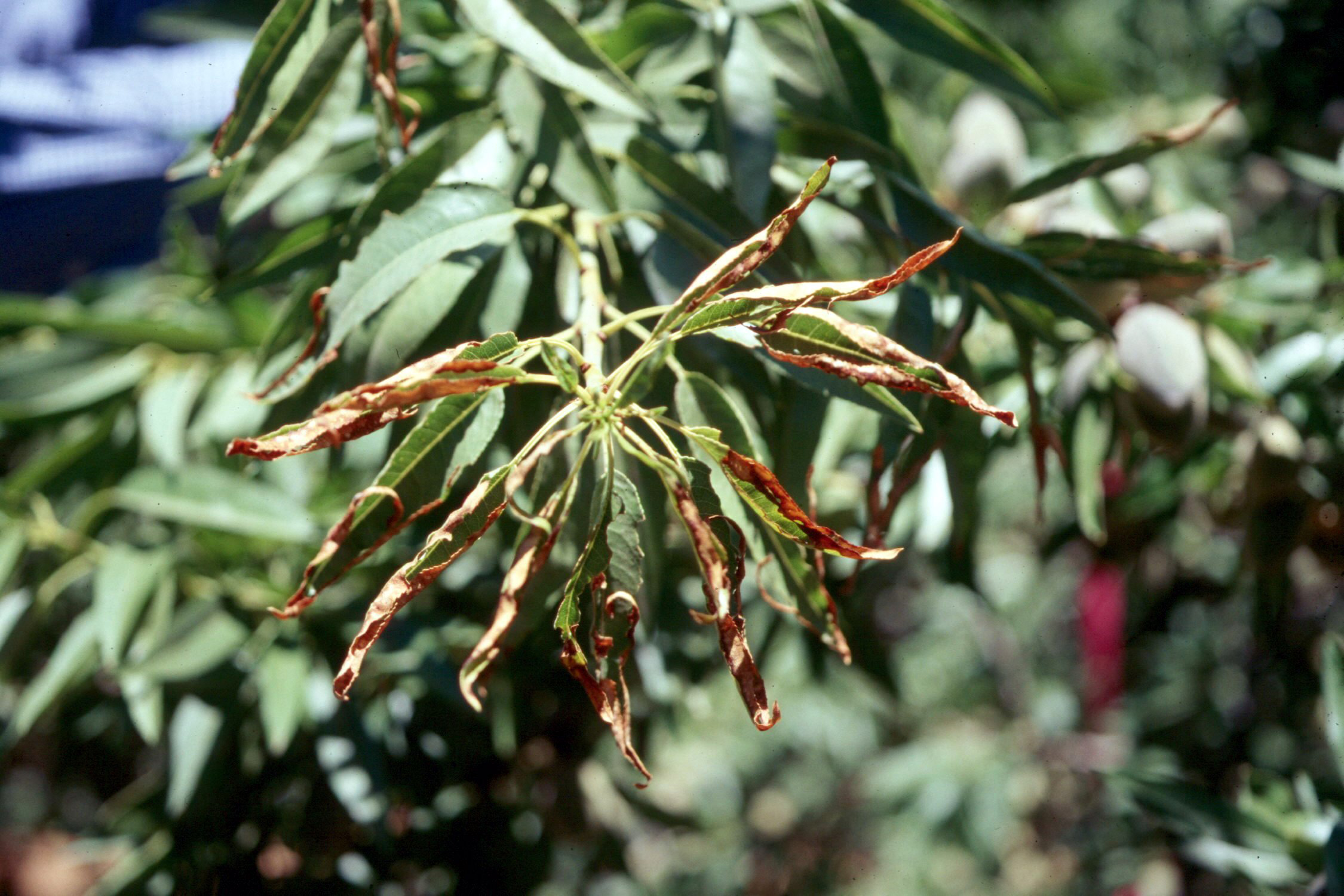While supplies of total potassium in soils is often quite large, relatively small amounts are available to the plant at any one time. That’s because nearly all of this K is in the structural component of soil minerals and isn’t available for plant growth. The amount of available potassium in the soil varies due in part to differences in soil parent materials and weathering. Potassium that’s readily available for plant growth is dissolved in soil water. This is the type of potassium measured on a routine soil test analysis.
Several factors affect potassium uptake by plants. As readily available potassium is dissolved in soil water, higher soil moisture usually means greater K availability.
However, as always, there can be too much of a good thing. If soil moisture content increases to saturation, root activity and K uptake decrease, because air is necessary for root respiration and K uptake by the plant. Oxygen levels are very low in saturated soils.

Potassium deficiency symptoms in almond trees include small leaves that are pale in color and have little new growth. Later in the growing season, trees may show rolled leaves with marginal leaf burning. This symptom is classic when it occurs in the tree top on leaves in the middle of new shoot growth. Photo courtesy of the International Plant Nutrition Institute.
Potassium in Almonds
Potassium, along with nitrogen, boosts growth and enables better water utilization in the tree. It is needed in large quantities for nut-fill and to achieve high yields. Calcium and potassium help improve nut fill and disease tolerance, reducing molds and storage rots.
According to the US Department of Agriculture, almond kernels contain 0.75% K, and potassium represents more than 2% of the dry weight of almond hulls (Calixto, 1982). We also know that of soil-derived nutrients, almond trees remove potassium and nitrogen in the greatest quantities. Removing almond hulls and kernels during harvest removes significant amounts of potassium from almond orchards. Depletion can be avoided by supplying potassium to the trees regularly throughout the season.
As always, if your crop is not reaching its full potential, or the same problems keep appearing, contact your crop nutrition expert to help investigate potential nutrient deficiencies. We’re here to help you develop a crop nutrition plan to meet your yield goals.

